LETTER 291
您可以在百度里搜索“The Works of Charles and Mary Lamb — Volume 6 艾草文学(www.321553.xyz)”查找最新章节!
LETTER 291
CHARLES LAMB TO BARRON FIELD
Sept. 22, 1822.
My dear F.,—I scribble hastily at office. Frank wants my letter presently. I & sister are just returned from Paris!! We have eaten frogs. It has been such a treat! You know our monotonous general Tenor. Frogs are the nicest little delicate things—rabbity-flavoured. Imagine a Lilliputian rabbit! They fricassee them; but in my mind, drest seethed, plain, with parsley and butter, would have been the decision of Apicius. Shelley the great Atheist has gone down by water to eternal fire! Hunt and his young fry are left stranded at Pisa, to be adopted by the remaining duumvir, Lord Byron—his wife and 6 children & their maid. What a cargo of Jonases, if they had foundered too! The only use I can find of friends, is that they do to borrow money of you. Henceforth I will consort with none but rich rogues. Paris is a glorious picturesque old City. London looks mean and New to it, as the town of Washington would, seen after it. But they have no St. Paul's or Westminster Abbey. The Seine, so much despised by Cockneys, is exactly the size to run thro' a magnificent street; palaces a mile long on one side, lofty Edinbro' stone (O the glorious antiques!): houses on the other. The Thames disunites London & Southwark. I had Talma to supper with me. He has picked up, as I believe, an authentic portrait of Shakspere. He paid a broker about £40 English for it. It is painted on the one half of a pair of bellows—a lovely picture, corresponding with the Folio head. The bellows has old carved wings round it, and round the visnomy is inscribed, near as I remember, not divided into rhyme—I found out the rhyme—
"Whom have we here,
Stuck on this bellows,
But the Prince of good fellows,
Willy Shakspere?"
At top—
"O base and coward luck!
To be here stuck.—POINS."
At bottom—
"Nay! rather a glorious lot is to him assign'd,
Who, like the Almighty, rides upon the wind.—PISTOL."
This is all in old carved wooden letters. The countenance smiling, sweet, and intellectual beyond measure, even as He was immeasurable. It may be a forgery. They laugh at me and tell me Ireland is in Paris, and has been putting off a portrait of the Black Prince. How far old wood may be imitated I cannot say. Ireland was not found out by his parchments, but by his poetry. I am confident no painter on either side the Channel could have painted any thing near like the face I saw. Again, would such a painter and forger have expected £40 for a thing, if authentic, worth £4000? Talma is not in the secret, for he had not even found out the rhymes in the first inscription. He is coming over with it, and, my life to Southey's Thalaba, it will gain universal faith.
The letter is wanted, and I am wanted. Imagine the blank filled up with all kind things.
Our joint hearty remembrances to both of you. Yours as ever,
C. LAMB.
[Frank was Francis John Field, Barron Field's brother, in the India House.
Shelley was drowned on July 8, 1822.
Talma was François Joseph Talma (1763-1826), the great French tragedian. Lamb, introduced by John Howard Payne, saw him in "Regulus," but not understanding French was but mildly interested. "Ah," said Talma in the account by James Kenney printed in Henry Angelo's Pic Nic, "I was not very happy to-night; you must see me in 'Scylla.'" "Incidit in Scyllam," said Lamb, "qui vult vitare Charybdiro." "Ah, you are a rogue; you are a great rogue," was Talma's reply. Talma had bought a pair of bellows with Shakespeare's head on it. Lamb's belief in the authenticity of this portrait was misplaced, as the following account from Chambers' Journal for September 27, 1856, will show:—
About the latter part of the last century, one Zincke, an artist of little note, but grandson of the celebrated enameller of that name, manufactured fictitious Shakespeares by the score…. The most famous of Zincke's productions is the well-known Talma Shakespeare, which gentle Charles Lamb made a pilgrimage to Paris to see; and when he did see, knelt down and kissed with idolatrous veneration. Zincke painted it on a larger panel than was necessary for the size of the picture, and then cut away the superfluous wood, so as to leave the remainder in the shape of a pair of bellows…. Zincke probably was thinking of "a muse of fire" when he adopted this strange method of raising the wind; but he made little by it, for the dealer into whose hands the picture passed, sold it as a curiosity, not an original portrait, for £5. The buyer, being a person of ingenuity, and fonder of money than curiosities, fabricated a series of letters to and from Sir Kenelm Digby, and, passing over to France, planted—the slang term used among the less honest of the curiosity-dealing fraternity—the picture and the letters in an old château near Paris. Of course a confederate managed to discover the plant, in the presence of witnesses, and great was the excitement that ensued. Sir Kenelm Digby had been in France in the reign of Charles I., and the fictitious correspondence proved that the picture was an original, and had been painted by Queen Elizabeth's command, on the lid of her favourite pair of bellows!
It really would seem that the more absurd a deception is, the better it succeeds. All Paris was in delight at possessing an original Shakespeare, while the London amateurs were in despair at such a treasure being lost to England. The ingenious person soon found a purchaser, and a high price recompensed him for his trouble. But more remains to be told. The happy purchaser took his treasure to Ribet, the first Parisian picture-cleaner of the day, to be cleaned. Ribet set to work; but we may fancy his surprise as the superficial impasto of Zincke washed off beneath the sponge, and Shakespeare became a female in a lofty headgear adorned with blue ribbons.
In a furious passion the purchaser ran to the seller. "Let us talk over the affair quietly," said the latter; "I have been cheated as well as you: let us keep the matter secret; if we let the public know it, all Paris and even London too, will be laughing at us. I will return you your money, and take back the picture, if you will employ Ribet to restore it to the same condition as it was in when you received it." This fair proposition was acceded to, and Ribet restored the picture; but as he was a superior artist to Zincke, he greatly improved it, and this improvement was attributed to his skill as a cleaner. The secret being kept, and the picture, improved by cleaning, being again in the market, Talma, the great Tragedian, purchased it at even a higher price than that given by the first buyer. Talma valued it highly, enclosed it in a case of morocco and gold, and subsequently refused 1000 Napoleons for it; and even when at last its whole history was disclosed, he still cherished it as a genuine memorial of the great bard.
By kind permission of Mr. B.B. MacGeorge, the owner both of the letter and bellows, I was enabled to give a reproduction of the portrait in my large edition.
Ireland was the author of "Vortigern," the forged play attributed to Shakespeare.] The Works of Charles and Mary Lamb — Volume 6




